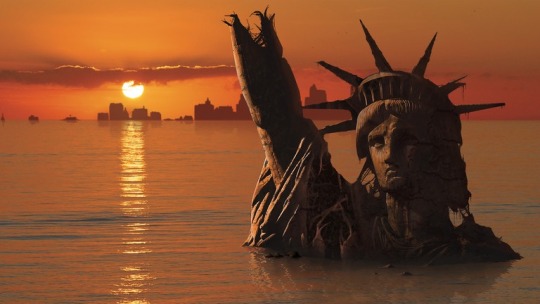#🇨🇳🇺🇸
Text









WMAF couple # 26 - Both American 🇺🇸
Dane Johnson and Pearl Liang Johnson got married in 2022. He's a former model who currently works as a health coach and she's an influencer. They have two sons: Their firstborn Jayce was born in 2020 and their second son Kaden was born in 2024
#wmaf#white male asian female#interracial#interracial love#interracial couple#international couple#international love#afwm#wmaw#awwm#white guys asian girls#white guy#asian girl#american#american guy#american girl#asian american#american asian#couple#couples#couple love#couple goals#mixed couple#异国恋#american chinese#chinese american#🇺🇸🇨🇳#🇨🇳🇺🇸
19 notes
·
View notes
Text

Kym Day
High Plain, Lo Mein, 2022
1 note
·
View note
Text
not to be antiamerican but on god i'll live to see the day the US' empire falls still in my lifetime 🙏
#the UN decision has me fucking LIVID#if you haven't been following the news: brazil drafted a solution for the humanitarian crisis in gaza#12 countries voted in agreement 🇨🇳 🇫🇷 🇦🇱 🇧🇷 🇪🇨 🇬🇦 🇬🇭 🇯🇵 🇲🇹 🇲🇿 🇨🇭 🇦🇪#2 abstained 🇬🇧 🇷🇺#and ONE. ONE VOTED AGAINST 🇺🇸#and because that ONE vote for some reason matters more than 12 otehr votes#the solution won't be passed#i'm so fucking mad. UN is such a joke. the US is such a joke. every empire falls and i will live to see the day the US does#im so tired#if you havent gotten it this is a pro-palestine blog. my mind will not be changed. just get out of here if you are not
49 notes
·
View notes
Text
#talkin#tik tok#🇬🇧#beans and toast niggas#the united kingdom#uk#united kingdom#england#great britain#🏴#colonization#china#🇨🇳#the united states#the united states of america#🇺🇸
250 notes
·
View notes
Text
The First Light of Trinity
— By Alex Wellerstein | July 16, 2015 | Annals of Technology

Seventy years ago, the flash of a nuclear bomb illuminated the skies over Alamogordo, New Mexico. Courtesy Los Alamos National Laboratory
The light of a nuclear explosion is unlike anything else on Earth. This is because the heat of a nuclear explosion is unlike anything else on Earth. Seventy years ago today, when the first atomic weapon was tested, they called its light cosmic. Where else, except in the interiors of stars, do the temperatures reach into the tens of millions of degrees? It is that blistering radiation, released in a reaction that takes about a millionth of a second to complete, that makes the light so unearthly, that gives it the strength to burn through photographic paper and wound human eyes. The heat is such that the air around it becomes luminous and incandescent and then opaque; for a moment, the brightness hides itself. Then the air expands outward, shedding its energy at the speed of sound—the blast wave that destroys houses, hospitals, schools, cities.
The test was given the evocative code name of Trinity, although no one seems to know precisely why. One theory is that J. Robert Oppenheimer, the head of the U.S. government’s laboratory in Los Alamos, New Mexico, and the director of science for the Manhattan Project, which designed and built the bomb, chose the name as an allusion to the poetry of John Donne. Oppenheimer’s former mistress, Jean Tatlock, a student at the University of California, Berkeley, when he was a professor there, had introduced him to Donne’s work before she committed suicide, in early 1944. But Oppenheimer later claimed not to recall where the name came from.
The operation was designated as top secret, which was a problem, since the whole point was to create an explosion that could be heard for a hundred miles around and seen for two hundred. How to keep such a spectacle under wraps? Oppenheimer and his colleagues considered several sites, including a patch of desert around two hundred miles east of Los Angeles, an island eighty miles southwest of Santa Monica, and a series of sand bars ten miles off the Texas coast. Eventually, they chose a place much closer to home, near Alamogordo, New Mexico, on an Army Air Forces bombing range in a valley called the Jornada del Muerto (“Journey of the Dead Man,” an indication of its unforgiving landscape). Freshwater had to be driven in, seven hundred gallons at a time, from a town forty miles away. To wire the site for a telephone connection required laying four miles of cable. The most expensive single line item in the budget was for the construction of bomb-proof shelters, which would protect some of the more than two hundred and fifty observers of the test.
The area immediately around the bombing range was sparsely populated but not by any means barren. It was within two hundred miles of Albuquerque, Santa Fe, and El Paso. The nearest town of more than fifty people was fewer than thirty miles away, and the nearest occupied ranch was only twelve miles away—long distances for a person, but not for light or a radioactive cloud. (One of Trinity’s more unusual financial appropriations, later on, was for the acquisition of several dozen head of cattle that had had their hair discolored by the explosion.) The Army made preparations to impose martial law after the test if necessary, keeping a military force of a hundred and sixty men on hand to manage any evacuations. Photographic film, sensitive to radioactivity, was stowed in nearby towns, to provide “medical legal” evidence of contamination in the future. Seismographs in Tucson, Denver, and Chihuahua, Mexico, would reveal how far away the explosion could be detected.

The Trinity test weapon. Courtesy Los Alamos National Laboratory
On July 16, 1945, the planned date of the test, the weather was poor. Thunderstorms were moving through the area, raising the twin hazards of electricity and rain. The test weapon, known euphemistically as the gadget, was mounted inside a shack atop a hundred-foot steel tower. It was a Frankenstein’s monster of wires, screws, switches, high explosives, radioactive materials, and diagnostic devices, and was crude enough that it could be tripped by a passing storm. (This had already happened once, with a model of the bomb’s electrical system.) Rain, or even too many clouds, could cause other problems—a spontaneous radioactive thunderstorm after detonation, unpredictable magnifications of the blast wave off a layer of warm air. It was later calculated that, even without the possibility of mechanical or electrical failure, there was still more than a one-in-ten chance of the gadget failing to perform optimally.
The scientists were prepared to cancel the test and wait for better weather when, at five in the morning, conditions began to improve. At five-ten, they announced that the test was going forward. At five-twenty-five, a rocket near the tower was shot into the sky—the five-minute warning. Another went up at five-twenty-nine. Forty-five seconds before zero hour, a switch was thrown in the control bunker, starting an automated timer. Just before five-thirty, an electrical pulse ran the five and a half miles across the desert from the bunker to the tower, up into the firing unit of the bomb. Within a hundred millionths of a second, a series of thirty-two charges went off around the device’s core, compressing the sphere of plutonium inside from about the size of an orange to that of a lime. Then the gadget exploded.
General Thomas Farrell, the deputy commander of the Manhattan Project, was in the control bunker with Oppenheimer when the blast went off. “The whole country was lighted by a searing light with the intensity many times that of the midday sun,” he wrote immediately afterward. “It was golden, purple, violet, gray, and blue. It lighted every peak, crevasse, and ridge of the nearby mountain range with a clarity and beauty that cannot be described but must be seen to be imagined. It was that beauty the great poets dream about but describe most poorly and inadequately.” Twenty-seven miles away from the tower, the Berkeley physicist and Nobel Prize winner Ernest O. Lawrence was stepping out of a car. “Just as I put my foot on the ground I was enveloped with a warm brilliant yellow white light—from darkness to brilliant sunshine in an instant,” he wrote. James Conant, the president of Harvard University, was watching from the V.I.P. viewing spot, ten miles from the tower. “The enormity of the light and its length quite stunned me,” he wrote. “The whole sky suddenly full of white light like the end of the world.”

In its first milliseconds, the Trinity fireball burned through photographic film. Courtesy National Archives and Records Administration
Trinity was filmed exclusively in black and white and without audio. In the main footage of the explosion, the fireball rises out of the frame before the cameraman, dazed by the sight, pans upward to follow it. The written accounts of the test, of which there are many, grapple with how to describe an experience for which no terminology had yet been invented. Some eventually settle on what would become the standard lexicon. Luis Alvarez, a physicist and future participant in the Hiroshima bombing, viewed Trinity from the air. He likened the debris cloud, which rose to a height of some thirty thousand feet in ten minutes, to “a parachute which was being blown up by a large electric fan,” noting that it “had very much the appearance of a large mushroom.” Charles Thomas, the vice-president of Monsanto, a major Manhattan Project contractor, observed the same. “It looked like a giant mushroom; the stalk was the thousands of tons of sand being sucked up by the explosion; the top of the mushroom was a flowering ball of fire,” he wrote. “It resembled a giant brain the convolutions of which were constantly changing.”
In the months before the test, the Manhattan Project scientists had estimated that their bomb would yield the equivalent of between seven hundred and five thousand tons of TNT. As it turned out, the detonation force was equal to about twenty thousand tons of TNT—four times larger than the expected maximum. The light was visible as far away as Amarillo, Texas, more than two hundred and eighty miles to the east, on the other side of a mountain range. Windows were reported broken in Silver City, New Mexico, some hundred and eighty miles to the southwest. Here, again, the written accounts converge. Thomas: “It is safe to say that nothing as terrible has been made by man before.” Lawrence: “There was restrained applause, but more a hushed murmuring bordering on reverence.” Farrell: “The strong, sustained, awesome roar … warned of doomsday and made us feel that we puny things were blasphemous.” Nevertheless, the plainclothes military police who were stationed in nearby towns reported that those who saw the light seemed to accept the government’s explanation, which was that an ammunition dump had exploded.
Trinity was only the first nuclear detonation of the summer of 1945. Two more followed, in early August, over Hiroshima and Nagasaki, killing as many as a quarter of a million people. By October, Norris Bradbury, the new director of Los Alamos, had proposed that the United States conduct “subsequent Trinity’s.” There was more to learn about the bomb, he argued, in a memo to the new coördinating council for the lab, and without the immediate pressure of making a weapon for war, “another TR might even be FUN.” A year after the test at Alamogordo, new ones began, at Bikini Atoll, in the Marshall Islands. They were not given literary names. Able, Baker, and Charlie were slated for 1946; X-ray, Yoke, and Zebra were slated for 1948. These were letters in the military radio alphabet—a clarification of who was really the master of the bomb.

Irradiated Kodak X-ray film. Courtesy National Archives and Records Administration
By 1992, the U.S. government had conducted more than a thousand nuclear tests, and other nations—China, France, the United Kingdom, and the Soviet Union—had joined in the frenzy. The last aboveground detonation took place over Lop Nur, a dried-up salt lake in northwestern China, in 1980. We are some years away, in other words, from the day when no living person will have seen that unearthly light firsthand. But Trinity left secondhand signs behind. Because the gadget exploded so close to the ground, the fireball sucked up dirt and debris. Some of it melted and settled back down, cooling into a radioactive green glass that was dubbed Trinitite, and some of it floated away. A minute quantity of the dust ended up in a river about a thousand miles east of Alamogordo, where, in early August, 1945, it was taken up into a paper mill that manufactured strawboard for Eastman Kodak. The strawboard was used to pack some of the company’s industrial X-ray film, which, when it was developed, was mottled with dark blotches and pinpoint stars—the final exposure of the first light of the nuclear age.
#Hiroshima | Japan 🇯🇵 | John Donne | Manhattan Project | Monsanto#Nagasaki | Japan 🇯🇵 | Nuclear Weapons | Second World War | World War II#The New Yorker#Alex Wellerstein#Los Alamos National Laboratory#New Mexico#J. Robert Oppenheimer#John Donne#Jean Tatlock#University of California Berkeley#Jornada del Muerto | Journey of the Dead Man#General Thomas Farrell#Nobel Prize Winner Physicist Ernest O. Lawrence#Luis Alvarez#US 🇺🇸#China 🇨🇳#France 🇫🇷#Soviet Union (Now Russia 🇷🇺)#Alamogordo | New Mexico#Eastman Kodak#Nuclear Age
38 notes
·
View notes
Photo

#folowforlikes #usa🇺🇸 #doglovers #dogsunglasses #animallovers #italy🇮🇹 #canada🇨🇦 #uk #argentina🇦🇷 #brasil🇧🇷 #florida #españa🇪🇸 #portugal🇵🇹 #swissalps🇨🇭 #china🇨🇳 #sidhumoosewala #StrangerThings #SidhuMosseWala #StrangerThings4 #NFFC #พัคโบกอม #UkraineUnderAttaсk #ผู้ว่ากทม #กกตเป็นเหี้ยอะไร #HEESEUNG_OFFMYFACE #StandWithUkraine #kopenzonderkijken #YOSHI #MonacoGP (at Manhattan, New York) https://www.instagram.com/p/CeOWD-gIi-m/?igshid=NGJjMDIxMWI=
#folowforlikes#usa🇺🇸#doglovers#dogsunglasses#animallovers#italy🇮🇹#canada🇨🇦#uk#argentina🇦🇷#brasil🇧🇷#florida#españa🇪🇸#portugal🇵🇹#swissalps🇨🇭#china🇨🇳#sidhumoosewala#strangerthings#sidhumossewala#strangerthings4#nffc#พัคโบกอม#ukraineunderattaсk#ผู้ว่ากทม#กกตเป็นเหี้ยอะไร#heeseung_offmyface#standwithukraine#kopenzonderkijken#yoshi#monacogp
5 notes
·
View notes
Text
The rand report on how US rules the world.
This is a link to a pdf from the Rand organisation on the proposed plans to subsume Russia. It is detailed and explosive, it perfectly exposes the recommendations to the Pentagon on the way forward for the US to bring about the downfall of the Russian state, with the express purpose of breaking Russia up into smaller units easily controlled by Washington corporate elites to secure vast oil &…

View On WordPress
1 note
·
View note
Text

The Battle Of Balge This His Mama House Not Your Apartment When You Were Kid Why We Seeing Junk I Own Rat Trap
0 notes
Photo

$100 trillion world economy #1🇺🇸 USA $25.3 trillon #2🇨🇳 China$19.9 #3🇯🇵 Japan$4.9 #4🇩🇪 Germany$4.3 #5🇬🇧 UK $3.4 #6🇮🇳 India $3.3 #7🇫🇷 France $2.9 #8🇨🇦 Canada $2.2 #9🇮🇹 Italy $2.1 #10🇧🇷 Brazil$1.8 via Visualcapitalist pic.twitter.com/51O7UApcop (at IRS - Department of the Treasury) https://www.instagram.com/p/Cmb_18xujQT/?igshid=NGJjMDIxMWI=
0 notes
Photo

#Repost @bhavishya_gautam_01 —— - —— 💻💻💻 Follow: 👉 @bhavishya_gautam_01 👈 for More Blogging ✍️ and Money Making Tips 💸 💥 Follow for Learn 💻 Digital Marketing and Blogging ✍️ _ _ _ 🤑🤑🤑 business_university —— #repost @business_university I highly recommend you to follow @warrenbuffettwealth Sharing one of the best content and real knowledge about making an income, growing your Financial knowledge and warning money! 💯 👉🏻 Follow @warrenbuffettwealth - Follow for daily Business and Market updates 🚀 - Follow 👉 - Tag someone who need to see this 🥇 - Turn on Post Notifications 🔔 to be the first to see our post 👌 Why is it important? Because its important to work out where your audience resides digitally, and this should form part of your digital marketing personas. Understand where you audience hangs out and then you can work out how you can reach out to them. - Follow for daily Business and Market updates 🚀 Turn on Post Notifications 🔔 to be the first to see our post 👌 Follow for more! 👉@bhavishya_gautam_01 👉@bhavishya_gautam_01 👉@bhavishya_gautam_01 Follow :👉@business_university Credit: DM us for credit (unknown) 💲💲💲💲💲💲💲💲💲💲💲💲💲 ✍️ • • • 💻 • • • ✍️ #BhavishyaGautam 🤵♂️ #7richest #country #unitedstates🇺🇸#japan🇯🇵 #india🇮🇳 #china🇨🇳 #germany🇩🇪 #unitedkingdom🇬🇧 #canada🇨🇦🍁 #financialfreedom #finance #job #wealth #millionaire #cryptocurrency #enterpreneur #instagram #passiveincome #seo #search #google #googlesearch #elonmusk #digitalmarketing (at United Kingdom) https://www.instagram.com/p/CjJMLnOLmTN/?igshid=NGJjMDIxMWI=
#repost#bhavishyagautam#7richest#country#unitedstates🇺🇸#japan🇯🇵#india🇮🇳#china🇨🇳#germany🇩🇪#unitedkingdom🇬🇧#canada🇨🇦🍁#financialfreedom#finance#job#wealth#millionaire#cryptocurrency#enterpreneur#instagram#passiveincome#seo#search#google#googlesearch#elonmusk#digitalmarketing
0 notes
Text
some verse tags !
☾ v. main. ☽ 🇹🇭🇪🇷🇪 🇮🇸 🇲🇦🇬🇮🇨 🇮🇳 🇹🇭🇪🇸🇪 🇲🇴🇴🇳🇨🇦🇰🇪🇸 🇫🇴🇷 🇾🇴🇺.
☾ au. celestial. ☽ 🇹🇭🇪 🇸🇹🇦🇷🇸 🇮🇳 🇹🇭🇪 🇨🇴🇸🇲🇴🇸 🇧🇴🇼 🇹🇴 🇲🇾 🇼🇭🇮🇲.
☾ v. corrupt i. ☽ ... 🇧🇺🇹 🇹🇭🇪🇾 🇦🇱🇱 🇪🇳🇩 🇺🇵 🇷🇪🇲🇦🇮🇳🇸 🇴🇫 🇹🇭🇪 🇩🇦🇾.
☾ v. corrupt ii. ☽ 🇨🇱🇦🇮🇲 🇾🇴🇺🇷 🇷🇮🇬🇭🇹 🇹🇴 🇦 🇼🇴🇷🇱🇩 🇴🇫 🇩🇦🇷🇰🇳🇪🇸🇸 ﹗
☾ v. otm. ☽ ‘🇨🇦🇺🇸🇪 🇮‘🇲 🇺🇱🇹🇷🇦🇱🇺🇲🇮🇳🇦🇷🇾 ﹗
☾ v. demon. ☽ 🇼🇭🇪🇷🇪 🇦🇱🇱 🇴🇺🇷 🇼🇪🇦🇵🇴🇳🇸 🇦🇷🇪 🇴🇫 🇩🇪🇲🇴🇳🇮🇨 🇶🇺🇦🇱🇮🇹🇾.
☾ v. banished. ☽ 🇪🇻🇪🇷🇾 🇵🇮🇨🇳🇮🇨 🇮🇸 🇦 🇱🇮🇹🇹🇱🇪 🇦🇩🇻🇪🇳🇹🇺🇷🇪 ﹗
☾ au. rabbit princess. ☽ ... 🇧🇺🇹 🇫🇮🇷🇸🇹﹐🇹🇭🇪🇾 🇲🇺🇸🇹 🇨🇦🇹🇨🇭 🇾🇴🇺.
#☾ v. main. ☽ 🇹🇭🇪🇷🇪 🇮🇸 🇲🇦🇬🇮🇨 🇮🇳 🇹🇭🇪🇸🇪 🇲🇴🇴🇳🇨🇦🇰🇪🇸 🇫🇴🇷 🇾🇴🇺.#☾ au. celestial. ☽ 🇹🇭🇪 🇸🇹🇦🇷🇸 🇮🇳 🇹🇭🇪 🇨🇴🇸🇲🇴🇸 🇧🇴🇼 🇹🇴 🇲🇾 🇼🇭🇮🇲.#☾ v. corrupt i. ☽ ... 🇧🇺🇹 🇹🇭🇪🇾 🇦🇱🇱 🇪🇳🇩 🇺🇵 🇷🇪🇲🇦🇮🇳🇸 🇴🇫 🇹🇭🇪 🇩🇦🇾.#☾ v. corrupt ii. ☽ 🇨🇱🇦🇮🇲 🇾🇴🇺🇷 🇷🇮🇬🇭🇹 🇹🇴 🇦 🇼🇴🇷🇱🇩 🇴🇫 🇩🇦🇷🇰🇳🇪🇸🇸 ﹗#☾ v. otm. ☽ ‘🇨🇦🇺🇸🇪 🇮‘🇲 🇺🇱🇹🇷🇦🇱🇺🇲🇮🇳🇦🇷🇾 ﹗#☾ v. demon. ☽ 🇼🇭🇪🇷🇪 🇦🇱🇱 🇴🇺🇷 🇼🇪🇦🇵🇴🇳🇸 🇦🇷🇪 🇴🇫 🇩🇪🇲🇴🇳🇮🇨 🇶🇺🇦🇱🇮🇹🇾.#☾ v. banished. ☽ 🇪🇻🇪🇷🇾 🇵🇮🇨🇳🇮🇨 🇮🇸 🇦 🇱🇮🇹🇹🇱🇪 🇦🇩🇻🇪🇳🇹🇺🇷🇪 ﹗#☾ au. rabbit princess. ☽ ... 🇧🇺🇹 🇫🇮🇷🇸🇹﹐🇹🇭🇪🇾 🇲🇺🇸🇹 🇨🇦🇹🇨🇭 🇾🇴🇺.
0 notes
Text
38 notes
·
View notes
Text
Almost Nothing Is Worth a War Between the U.S. 🇺🇸 and China 🇨🇳
Americans and Chinese have to rehumanize each other in terms of the way we conceive of our problems and engage.
— By Howard W. French | Foreign Policy | August 21, 2023

A child sitting on a man's shoulder takes a picture as she visits the Bund waterfront area in Shanghai, China, on July 5, 2023. Wang Zhao/AFP Via Getty Images
Midway into my just-completed one-month stay in China, I found myself seated alone in a tasteful restaurant in an upscale shopping mall in Shanghai, where I had gone for dinner.
There, amid dim lighting and soft traditional music, I had a kind of revelation. Bear with me. Against the opposite wall sat a three-generation Chinese family dining together. Two grandparents, slouching a bit, their visages deeply lined, faced in my direction, and seemed to exhibit mild curiosity about what has become a rare sighting recently, even in China’s most cosmopolitan city: a foreigner. They watched closely as I spoke with the waiter in Chinese to complete my order.
Two other people—from all evidence their much taller daughter, who was dressed in the refined way of a well-paid professional, and a small grandchild—sat with their backs to me. I was only able to see their faces when the mother stood up mid-meal to take her girl to the bathroom. In this little glimpse of three generations, an entire world opened up for me, as did a deep sense of alarm over one of the most urgent problems facing all of humanity in these times.
As a former longtime resident of China and someone who has been studying the country since I was a college student many decades ago, I could not prevent myself from trying to imagine the run of experiences the two elders had lived through. I guessed they were roughly my age, meaning in their 60s, but they looked a lot older and more worn than your average well-kept American of similar age.
This meant they would probably have harsh memories of the Cultural Revolution, the decade of political violence and upheaval that began under Mao Zedong in 1966. They or their families may also have suffered even worse tribulations late in the previous decade during the “Great Leap Forward,” when Mao’s crash effort to industrialize resulted in tens of millions of Chinese people starving to death.
Now, the elderly looking man who gazed across the narrow space separating us wore a light blue Gap t-shirt as he picked his way gingerly through a three-course meal, seemingly taking his time to chew. What did he understand of the symbolism of mass consumerism represented in the white logo emblazoned on his shirt? What did he make of the proliferation of this temple of marketing and surplus that is the shopping mall, a cultural phenomenon that contemporary China has made its own? How did he feel about the long curve of his life? Of the grave errors that China had made, but also about where it had ended up, or at least where it stood in this moment? I almost wanted to ask him, but thinking it would have been too much of an intrusion, I restrained myself, with regret.
In those moments, these thoughts impelled me to think about the curve of life in my own country, the United States, too—of how easily one can assume a kind of superior or even triumphalist attitude toward other people in other places. I had just missed being of draft age in the Vietnam War, a senseless tragedy visited upon tens of millions of Southeast Asians, for reasons as specious as many of Mao’s economic and political ideas. I thought of the persistent denial of civil rights for African Americans, which continued in a de jure sense almost into my teenage years. I thought of the devastation to the planet caused by America’s heedless crusade for wealth. Then, based on the evidence, I concluded that bad decisions and human folly are, well, universally human.
The biggest human folly I can presently think of, though, would be something that nowadays seems frighteningly easy to imagine: a war between the United States and China. Until the coronavirus pandemic, I had either lived in or visited China every year since the late 1990s. I plan to write several columns based on my recent return to the country after four years of pandemic-enforced absence. But this is not yet the occasion for a deep exploration for the political, economic, and strategic issues that are pushing to the two countries so far apart and fueling ever greater risk of catastrophe.
I’ll just say here that this is not a situation where, as so many in each country may be inclined to think, if only the other side would stop doing things that threaten or provoke us, the war clouds would dissipate. We have problems together, and if they are to be prevented from causing mass death and destruction, both countries will have to escape the endless loop of reflexively problematizing and sometimes essentializing the other, along with the relentless self-justification.
Many will think me naive, but this has to begin with something all too rare. Americans and Chinese have to rehumanize each other in terms of the way we conceive of our problems and engage. Actually, seeing people in China, like that family across from me at dinner, helped bring this home. But how can this be achieved for the crushing majority of Americans and Chinese who will never visit the other’s country? How can we strip off the layers of surface things that separate us to get in touch with the profound humanity that should unite us? It’s hard work, and the answer is not obvious, but it is urgent.
Since I’m ready to be accused of naivete, I’ll try to start first. There is almost nothing that is worth a war between the United States and China. I’ll come back to the tricky sounding “almost” in a second—it’s actually not as big of an asterisk as some might imagine. Control over Taiwan, which the government of Chinese President Xi Jinping has made into an all-too-public obsession, is not worth the killing that would be unleashed by a Chinese invasion and by any U.S. response in defense of that island. Continued U.S. geopolitical preeminence in the world is also not worth a major armed conflict with China. This is not a call for capitulation, but rather for both countries to find ways to prioritize coexistence and avoid disaster.
As a non-academic historian, I read an inordinate amount about the past, and I have always been struck by the airs of overconfidence and intoxication that have preceded many great past conflicts. On the eve of World War I, for example, elites on both sides—in Germany and Britain—were blithely predicting the troops would be home by Christmas.
Most Americans (and most Chinese) probably spend precious little time thinking about what war would do to their own country. It would be useful to give a wider airing of war game scenarios, such as one carried out recently by the Center for Strategic and International Studies, that make clear just how devastating a conflict could be. In this example, just one of many, Hawaii, Guam, Alaska, and San Diego, California, would all come under withering Chinese attack, up to and potentially including with nuclear weapons. Lest Chinese people think that they would have little to fear by way of direct impact, just for starters, many areas of coastal China, where the country’s population and wealth are heavily concentrated, could face a rain of U.S. missiles.
What are people willing to concede in order to avoid such a fate? In a book I wrote about China’s conception of itself as a great power, I concluded that the United States needed, for starters, to signal a lot more serenity in its competition with China. For at least two decades, my country has behaved as if a bit haunted by the prospect of being overtaken. But for objective reasons—including China’s extraordinarily profound demographic problems, the declining effectiveness of China’s economic policies, and a plethora of domestic challenges in the country—the United States needn’t be. What is more, though, is that the signals of American anxiety, which are rife in the political culture and come through in many U.S. policies, fuel Chinese nervousness, insecurity, and over-assertiveness.
China, for its part, needs to get over its own insecurities. The air of self-confidence it seeks to project is powerfully belied by the constant resort to overt nationalism and to assertions that in its dealings with other countries—or with international bodies like international tribunals governing laws of the sea, for example—only others are capable of incorrect positions. China, by contrast, is not only always right but also righteous.
Beijing is profoundly worried about the staying power of its own political system, but it needn’t obsess, as it claims to, over the supposed efforts of others to undermine it. Whatever threats there are to China’s system of rule come from within China itself. Nobody outside of the country, in other words, is trying to bring down the Communist Party. Only the party itself can achieve this, by failing to reform in step with the desires of the country’s own population.
So how can we restore some confidence on both sides? First the asterisk from above. War should be ruled out except in the case of a direct attack by one side on the other, which means we should rule out attacking each other. China should meanwhile also lower the temperature on Taiwan, in tandem with more reassurances from the United States that Washington does not support the idea of formal independence for the island.
Chinese and American leaders also have to start speaking with each other and meeting much more often face to face. There is really no substitute for this, for as much as what were once called people-to-people exchanges can reinforce a shared sense of humanity, seeing political leaders shake hands and smile and meet across the table to discuss thorny issues separating the two sides can also remind both countries’ public and political classes that there is nothing so hard that it can’t be talked about.
— Howard W. French is a Columnist at Foreign Policy, a Professor at the Columbia University Graduate School of Journalism, and a longtime Foreign Correspondent. His latest book is Born in Blackness: Africa, Africans and the Making of the Modern World, 1471 to the Second World War.
#Foreign Policy#China 🇨🇳 | United States 🇺🇸#Worthless War#Howard W. French#Argument#Cultural Revolution#Vietnam War#Mao’s Economic and Political Ideas#Political | Economic | Strategic Issues#Taiwan 🇹🇼#Hawaii | Guam 🇬🇺 | Alaska | San Diego#Beijing | Washington
13 notes
·
View notes
Text


The 355 (2022, Simon Kinberg)
1 note
·
View note
Text
📰 essential read the US warmongering explained.
MICHAEL HUDSON speaking with RADHIKA DESAI
Extracts from the programme that lift the lid on the motivational forces that causes the US to behave so disgraceful.
“In today’s show, we look at how the United States is responding to this structural transformation of China’s economy. Our short answer is: badly. It keeps military and diplomatic tensions high, continues provocative visits of…

View On WordPress
#BRICS+#climate catastrophe#🇨🇳 China#🇷🇺 Russia#🇺🇸US#Economics#environmental#Geo politics#military aggressors#NATO wars#Neo cons
1 note
·
View note